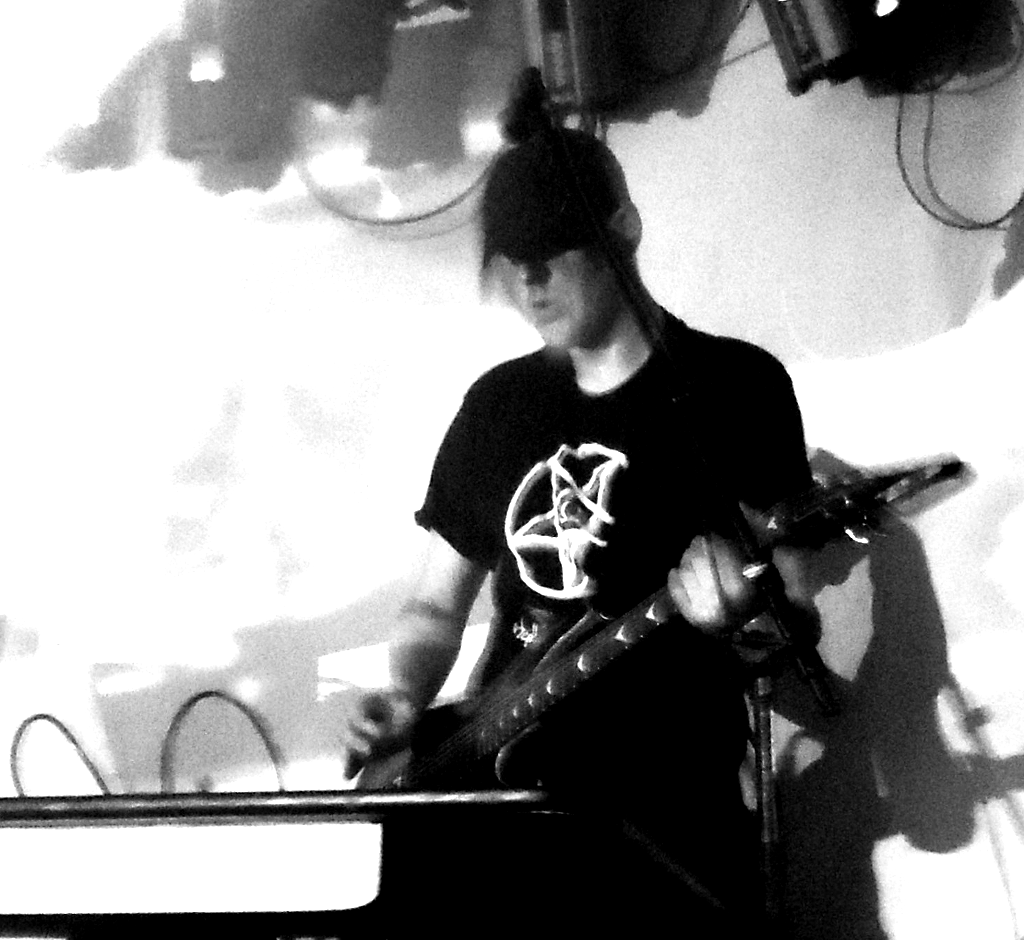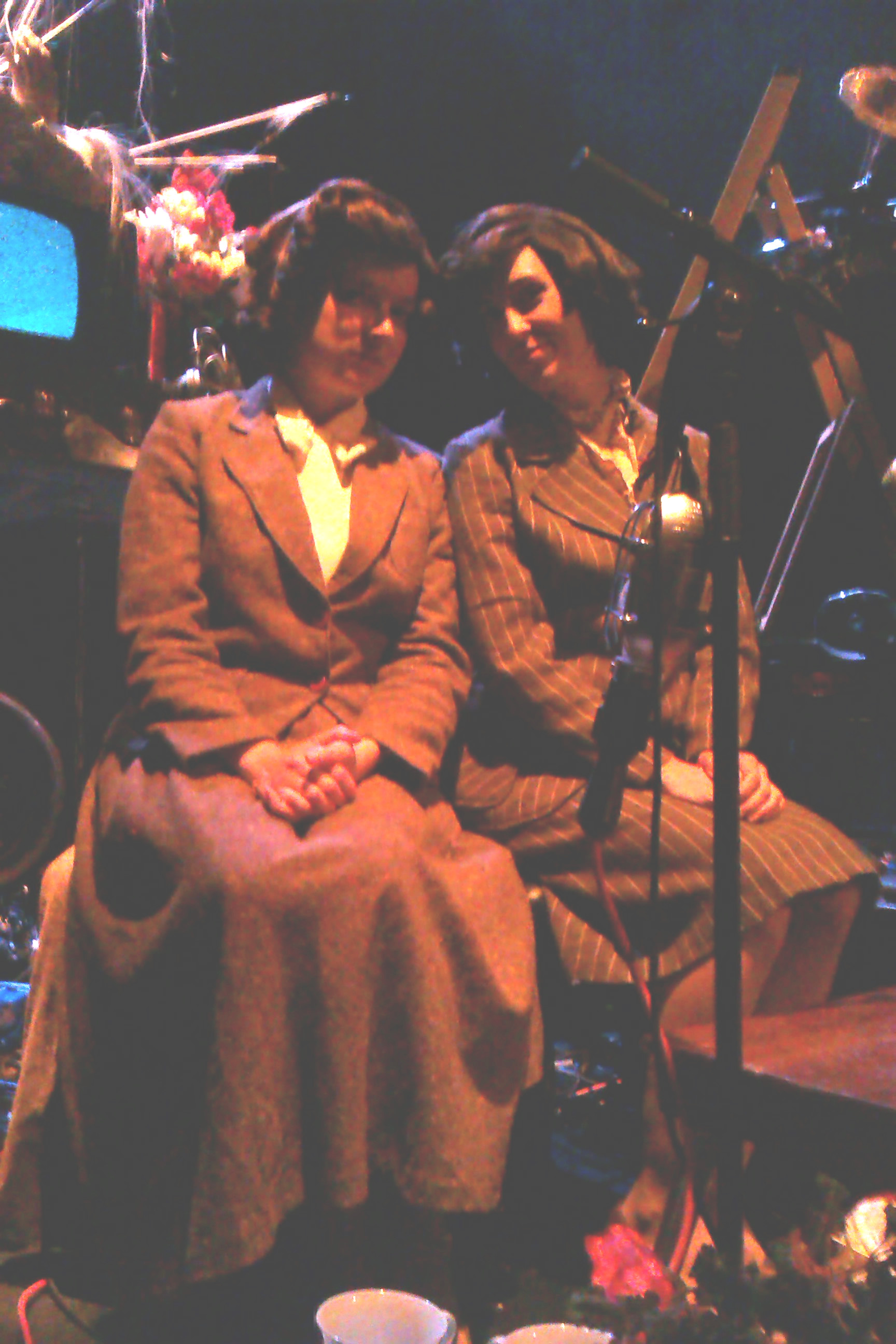Bexhill on Sea
11 May 2013
Personal history, you can skip this bit if you like: Back in the late 1990s I discovered what was London’s finest, most idiosyncratic record shop, These Records, following a tortuously convoluted traipse through the back-streets of Elephant and Castle guided by an A-Z and an address label stuck on the back of a second-hand Nurse With Wound CD. Behind the shuttered windows on this unprepossessing residential street, the shop’s wall was lined with a series of oversized cardboard wallets baring unfamiliar, opaque and confounding titles and representations of digital abstractions and oblique geometric forms; MEGO‘s in-house graphic designer Tina Frank‘s representations of what would soon, for better or worse, come to coalesce into a codified ‘glitch’ aesthetic.
What most differentiated MEGO from – say – Carsten Nicolai‘s contemporaneous Raster-Noton imprint, was that Alva-Noto et al seemed in endless pursuit of a mathematical rigour and sterile reduction (not, for what its worth, a criticism) whereas, from the motorik electro-pop of Gerhard Potuznik to Hecker‘s weird digital dismantlings, MEGO’s singular pursuit of sound-qua-sound seemed to be inoculated by a trenchant sense of transgression and wilful perversity that never allowed its distinctive style to become reducible to a signature aesthetic. If, as historian TJ Clarke asserts, we inhabit modernism as ‘our’ classical antiquity then rather than drafting facsimile Bauhaus pavilions, MEGO have, like latter day Lettristes, constructed their own gutter poetics from sifting through the ruins.Anyway, my intrepid curiosity that morning introduced me to both the work of Bernard Parmegiani, the hirsute, pipe smoking master of electroacoustic temporal abstraction and also to the more visceral joys of scarcely remembered digi-junk combo CD_Slopper, one part of which comprised Florian Hecker, and both of whose works would be presented in their absence at Bexhill-on-Sea’s De La Warr Pavilion on a windy Spring day some 15 years later.
Last year’s free public event We Can Elude Control was undoubtedly one of the highlights of 2012, seeing the likes of Evol and Ekoplekz playing alongside Cerith Wyn Evans‘ uncanny sculptural installations. While this superficially similar event is more sparsely attended, perhaps unsurprisingly given that last year’s event was free, the division of the performances between the main auditorium and a smaller surround-sound listening space allowed the audience to alternate between more traditional performance-spectacle and the chance to immerse, absorb and sprawl out to both new and canonical acousmatic works realised in the sound laboratories of the Groupe Recherche Musicales.
So, after half an hour of exploring every corner of the elegant 1930s pavilion (in fact worth a trip to Bexhill in itself) it sounded like some music was emanating from the auditorium. Billy Roisz (with whom I was heretofore unfamiliar) was up first.
Now if, like me, you’re lucky enough to have a television that can still pick up analogue signals, you can switch your telly onto the empty analogue setting where the programmes used to be, pump up the volume and enjoy the rush of fuzz and static beaming a heady brew of nostalgia and delirium directly into your cranium. Zone out for too long and you’ll hear secret messages from old boggle-eyes himself, and Billy Roisz, who opened up this (Editions) MEGO shindig on sea, is obviously well versed in this ritual, her set opening with just such swathes of static, bathed in IBM green, phasing and warping on the rather enormous screens that bedeck the stage as though we’re watching a tenth-generation VHS tape of a TOPY TV Magick ritual being played back with the tracking out of kilter.As the billowing crackle develops its own rhythmic undertow, the visuals and sound take on the earthy rhythmic pulse of Pan Sonic at their most grizzled. Billy Roisz appears to be making this happen by pummelling on an electric guitar upon a tabletop, creating clusters of piercing tones and clods of sonic debris while the cavernous thud doesn’t so much propel the music onwards as draw it ever downwards. Only when this repetitive-compulsive-throb stops does one feels a vertiginous drop into the crackling ether beneath, and it all draws to a close seemingly as quickly as it started.
After that it’s time for a spot of deep listening – Bernard Parmegiani’s fêted masterpiece of temporal abstraction De Natura Sonorum (that’s The Nature Of Sounds, thicky) is ricocheting between the multiple speakers in the cordoned-off listening space upstairs; I perch on the floor since there’s no cushions left unoccupied and I find my eyelids slowly closing – before I know it I’m being buffeted by intricate bits of machinery, pelted with metallic ballbearings, lost in the courtyard of a conservatoire as the scritch-scritch of violins and semi-recognisable musical instruments melts and shifts and sucks into the vortex. I’m gently nudged awake.
Back downstairs and long-time sonic experimenter Bruce Gilbert has shut himself in a wooden shed in the middle of the auditorium, bringing a much needed slice of DIY into the realm of electronic improvisation. It’s hard to be faced with a shed in this context and not call to mind the peculiar collusion of the alien and the domestic that pervades the work of – for example – Fred Judd‘s sublime jerry-built electronica, and Bruce, hunched in his wooden hut over an array of digital detritus, creates a run of quixotic atmospheres of serenity and estrangement, poised somewhere between the implacable disquiet of his mid ’80s works such as This Way and the deep space tones and explosions of Conrad Schnitzler at his most kosmische. Having no laptop-lid to close, as is the tradition, Bruce poked his head around the door – that’s yer lot.Following a playback of works by MEGO stalwart Hecker upstairs in the isolation room, it was the turn of his sometime collaborator Russell Haswell to take the stage, and true to form, Russell seemed to take sadistic delight in by turns confounding and pummelling his audience. Haswell mischievously coaxed from some hand-held object (is it a videogame controller? a child’s soft toy?) a bewildering array of splutters, squeals, barbed and tangled thickets of noise; a succession of shrill staccato panic-tones is pulverised into a slow, treacly gloop, like a shrill TB303 slowly drowning in a tumbler full of J.Collis Brownes.
For all its non-linear abstraction, Haswell’s music is determinedly physical, rerouting the architectural physicality of Xenakis through the collective derangement of Acid Trax. The sense of danger and unpredictability, the abrupt shifts, dropouts and doppler-shifts create something quite unlike anything else in the pantheon of post-laptop-noise business and trying to follow it all is rather like trying to plot the path of a piece of string in the process of being unknotted – impossible and demanding of a whole new apprehension of time, space and geometry. Only less po-faced than that sounds: overall, the experience might be compared to being chased down a particularly complicated rabbit hole by a legion of angry metal woodpeckers. Haswell half-jokingly berates members of the audience for laughing, but frankly how else to reconcile such an incommensurable experience, equal parts aberrant terror, gleeful stupidity and deadly seriousness.Now, one might almost be forgiven for overlooking Mat Steel, he one half of the long-running .snd project. Unobtrusively perched in the atrium adjacent to the auditorium, Steel filled the thoroughfare with arrays of glacial tones and clusters that might’ve repaid its due attention in a more forgiving space; as it was, the iridescent sonics functioned beautifully as a kind of porous membrane between the auditorium and the pristine seaside modernism of its surroundings.
Mark Fell, .snd’s other half, however, had the equally inauspicious job of following Russell Haswell’s rapturous reception and from what it seems could be a somewhat arid, microscopic deconstruction of the dynamics of minimal techno, Fell’s set inexorably unfolds into something far trippier and more sensuous, as the rhythms seem to develop extra legs and limbs, punctuated by fractal electronics. Fell weaves a tangled path of frustrated desire and rhythmic curtailment, towards a kind of decentred, polyrhythmic jacking zone. While the stroboscopic propulsion of these criss-crossed patterns seemed to demand the development of some extra rhythmic receptors and preferably a few extra limbs, some of the regular humanoids in the auditorium were giving them a dancefloor tryout too, poised somewhere between struggle and rapture. I’d seem to have been in a minority of one in being underwhelmed by Kevin Drumm‘s oppressive torrent of noise and Locust‘s slow-motion ambient electronics had something of the mittel-European melancholy of New Beat about it, but felt like an interval rather than an ‘event’. Last on the agenda for me, though, was a play-through of Luc Ferrari‘s Presque Rien #1: Le Lever du Jour Au Bord De La Mer, a clear, almost hyperreal recording of daybreak in an unspecified coastal village in which the sensory experience is heightened and made uncanny through subtle, almost imperceptible tape manipulations.Walking along the beach and through an eerily quiet Bexhill-On-Sea back towards the train station it was as though ones perceptual apparatus had been temporarily rewired, each sound magnified into something truer-than-true, the ears alighting on tiny details, every gust of wind, every overheard voice a hypersensate, ever-present anticipation.
-Jim Backhouse-



